Question: What alcoholic beverage is made in France, has a pale yellow colour, and fine bubbles? Nope, not champagne.
Rock god Frank Zappa once famously said, “You can’t be a real country unless you have a beer and an airline – it helps if you have some kind of football team, or some nuclear weapons, but in the very least you need a beer.” Air France…. OGC Nice…. a bunch of rusty warheads…. Check! And, yup: La Brasserie du Comté! Thank God, France is a real country!
In 2011, Thomas Martin and Laurent Fredj, two young and smart entrepreneurs from St. Martin de Vésubie, spotted a trend that was catching on fast, and not just among thirsty expats. The drink that is hot on the heels of rosé wine as the local favorite, is good old-fashioned beer. So, after a year of intensive research, they founded La Brasserie du Comté which has since turned into a favorite local brand. And nomen est omen: La Bièra Brassada Aquí is indeed the beer brewed here, in every way. Coming from the picturesque Mercantour region, just 65 km outside Nice, this beer is proudly rooted in its Nissart heritage and identity, from its label sporting the Eagle representative of the Comté, to the brew’s characteristic light yet earthy flavor which is carefully developed to appeal to local preferences.
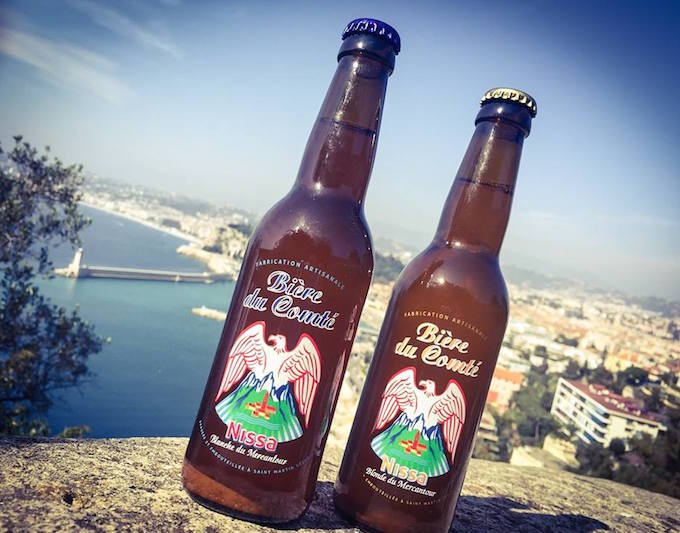
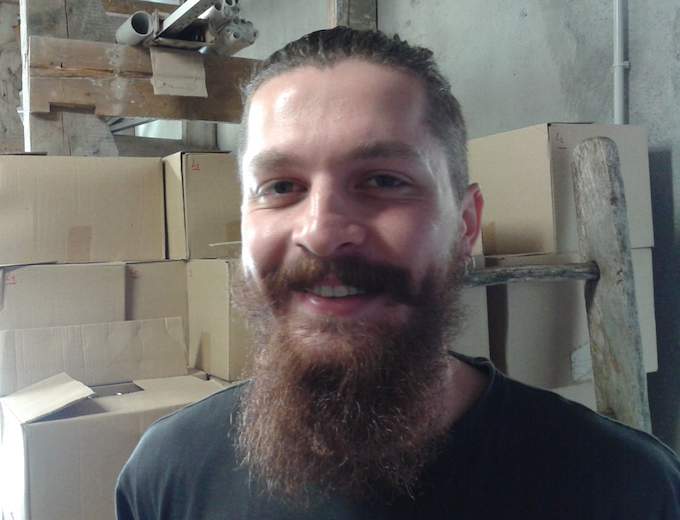
It’s a small artisanal brewery, and just two years in, it already produces and sells as much as 3,000 bottles (1,000 litres) a week. Presiding over an array of kettles and handling them like fine-tuned instruments: Jérôme Routhier (pictured above), the young brewer from Burgundy. Wait – Burgundy, a classic French winegrowing region? What would attract him to making beer of all things? “Beer is more convivial as a beverage than wine, and less fussy,” he thinks. “And the younger generation enjoys beer because the abundance of flavor profiles offered these days complements a more casual, contemporary style of dining.” Jérôme is a man of few words but he demonstrates his passion and enthusiasm for his craft by the way he expertly and serenely handles his kettles as if he were playing an organ concerto.
The two standard products come in a “white” and ‘blonde” variety, and then there are seasonal specialities ranging from a floral note in spring to a robustly fruity summer flavor of red berries, and spicy and chestnutty overtones in fall. “Artisanal also means not having to slavishly stick to a particular recipe but being able to play with it,” according to Jérôme. The basis of it all is the same though – simple ingredients of the best quality available. Water from a local source, malt, hops, and yeast. While the brewing process itself takes just the better part of a day, between one and two months are needed to mature hop tea into beer.
Beer is one of the oldest and most universal beverages of human culture, going back to Egypt over 5,000 years ago. It also is seemingly one of the simplest ones, just based on its barebone ingredients. But the art of brewing beer has come a long way since the pharaohs were setting a jug of barley water out in the sun waiting for it to ferment.
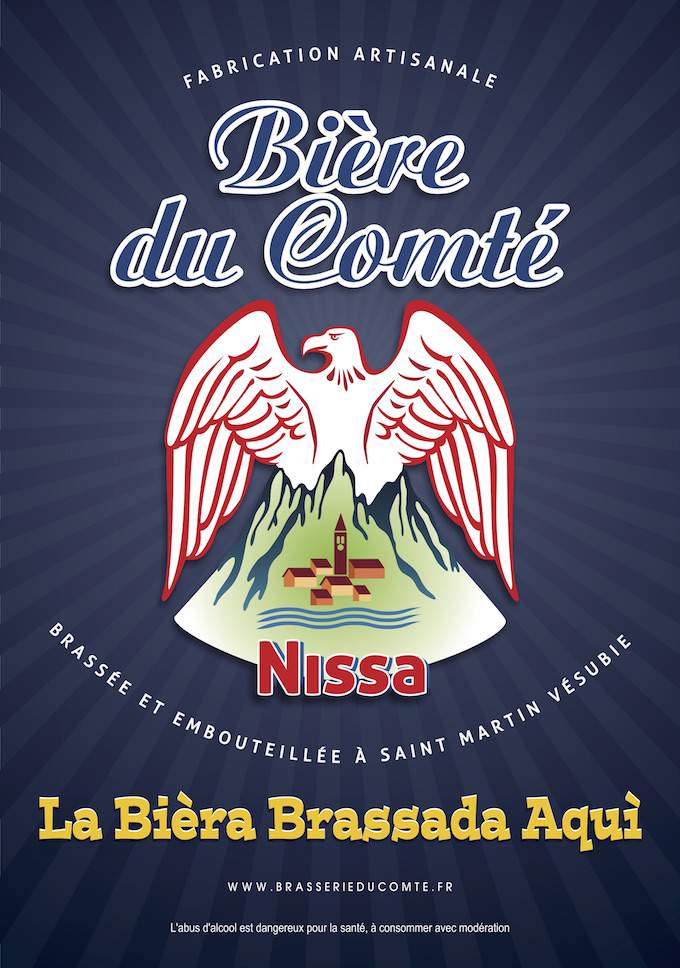
Today’s process requires a thorough understanding of science and chemistry:
– In the first step of mashing, malted barley grains are soaked in hot water for about an hour in order to release the sugars contained in the grains. Releasing the sugars is essential because they are the food for yeast during the later fermentation stage to produce alcohol. In addition to contributing fermentable sugars, the malt also brings flavor, aroma, and body to the party, and its roast is selected according to the desired flavor profile.
– The malt is then sparged, i.e. rinsed with hot water in order to extract any remaining sugar, and separated from the hot liquid. The liquid, now called wort, is sent to another tank for final processing. The grains are discarded.
– The wort goes to the boil kettle for about an hour to kill any micro-organisms present in the liquid. During this stage, hops are added to the beer but the timing depends on the desired flavour characteristic. This is the stage where the experienced brewer crafts and fine tunes the profile of the beer.
– The wort is then rapidly cooled down to 80 degrees, and yeast is added, or “pitched”. This is the last step in the typical brew day.
– Next up is fermentation, which is largely a waiting period. The yeast consumes the sugars that were released and converts them into alcohol and carbon dioxide. The carbon dioxide is released into the air and the alcohol stays in the beer. This process usually takes 1-2 weeks.
– And the final step in the chain is carbonation, done by directly injecting carbon dioxide into the beer, or alternatively adding a small amount of sugar to the bottles. The residual yeast left in the bottles will consume the sugar and naturally carbonate the liquid by releasing C02. This is known as “bottle conditioning”.
– And finally, ready for bottling and enjoying!
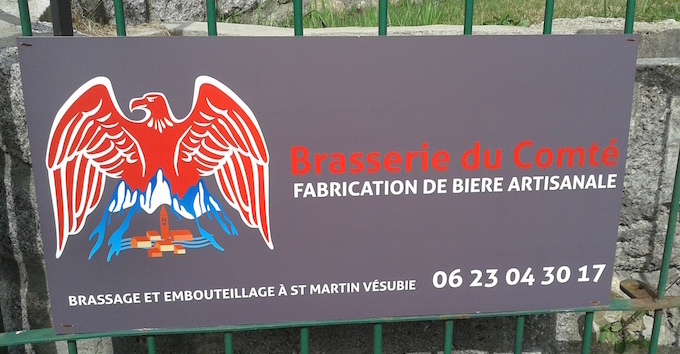
Sounds like a lot of effort? The shortcut is to simply go to one of the outlets throughout PACA where La Bièra Brassada Aquí is sold. You can also order online directly from La Brasserie du Comté’s website.
Natja Igney is a senior global communications strategist with 1021 Global Communications Consulting. She has a particular interest in theatre and filmmaking.
All images courtesy La Brasserie du Comté; photos of Jérôme Routhier and brewery sign © Natja Igney


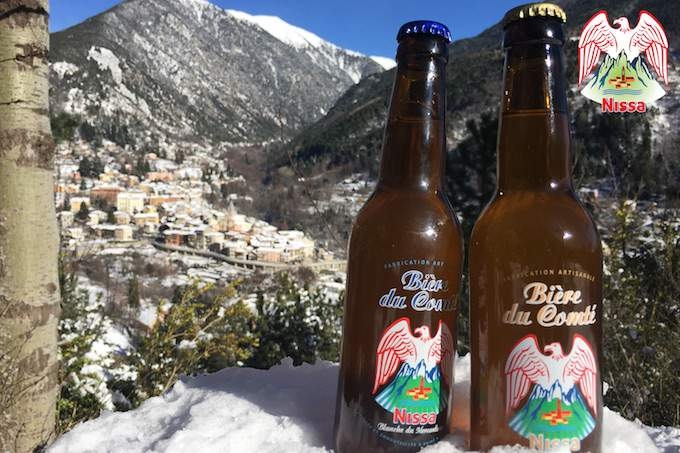

Leave a Reply